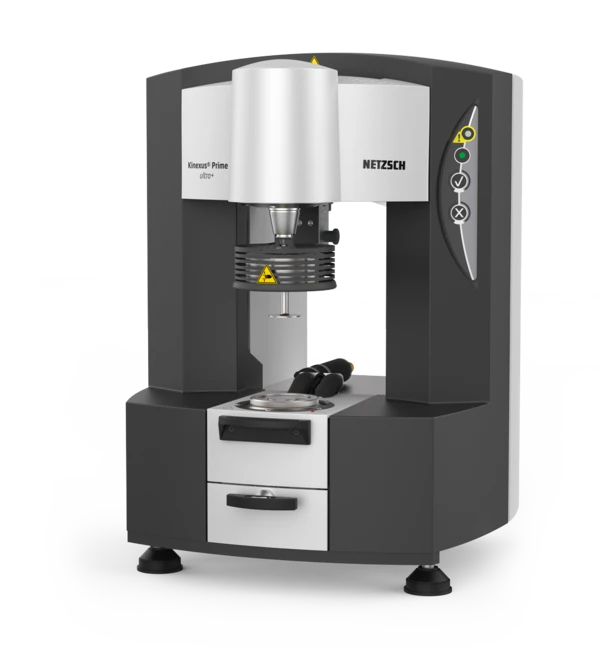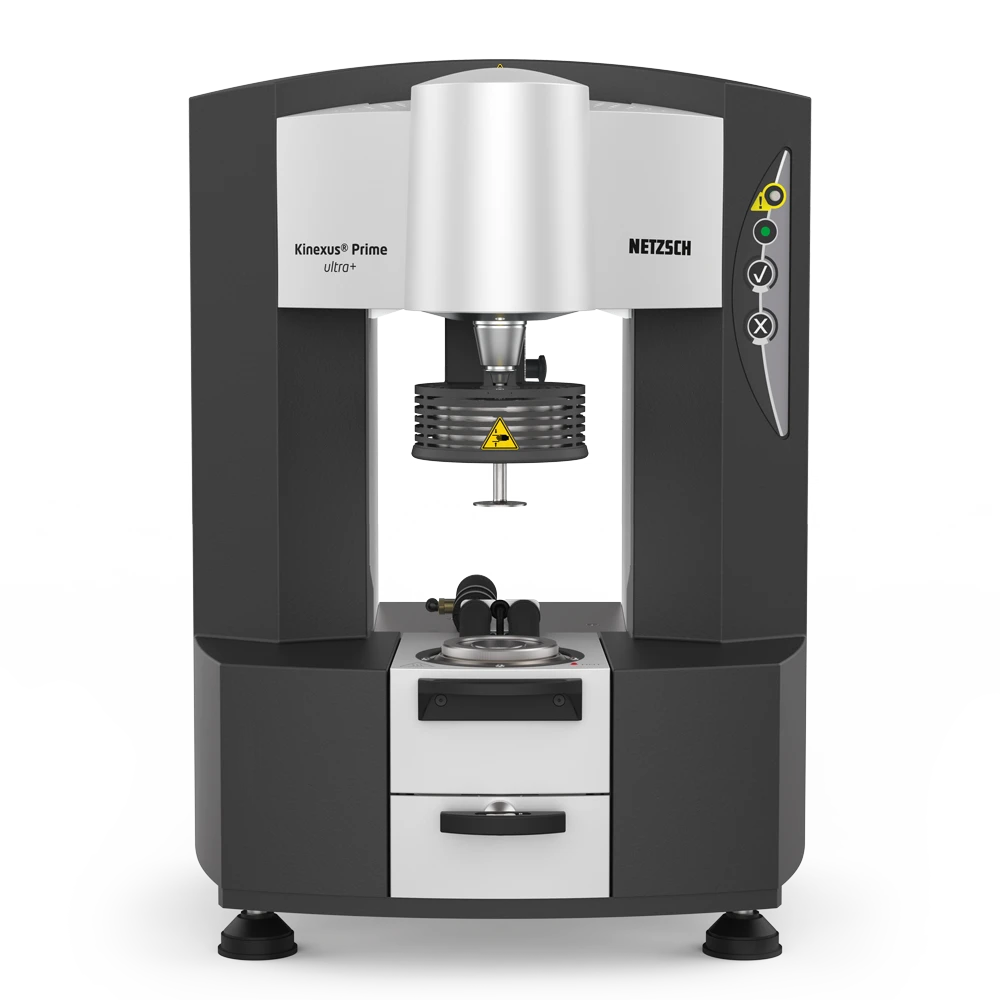The Power of Prime for advanced testing
The Kinexus Prime ultra+ rheometer has the highest sensitivity air bearing and widest torque range, coupled with the unprecedented vertical (axial) control capabilities of the Kinexus platform, for advanced rheological testing. Unique sequence-driven rSpace software enables fully customizable test design to allow researchers to set-up and investigate tailored rheological test protocols.
The Kinexus Prime ultra+ Rheometer
It incorporates technological innovations that enable optimal flexibility in rheological test capabilities and protocols - for advanced research.
- All modes of rheological operation – StressStress is defined as a level of force applied on a sample with a well-defined cross section. (Stress = force/area). Samples having a circular or rectangular cross section can be compressed or stretched. Elastic materials like rubber can be stretched up to 5 to 10 times their original length.stress control, shear rate control and direct StrainStrain describes a deformation of a material, which is loaded mechanically by an external force or stress. Rubber compounds show creep properties, if a static load is applied.strain controlled oscillation at demand StrainStrain describes a deformation of a material, which is loaded mechanically by an external force or stress. Rubber compounds show creep properties, if a static load is applied.strain amplitude for accurate control of sample StrainStrain describes a deformation of a material, which is loaded mechanically by an external force or stress. Rubber compounds show creep properties, if a static load is applied.strain history.
- Unprecedented dual-action capabilities for both shear and vertical testing.
- Highest specification air bearing with ultra-low torque offset to minimise data corrections.
- Exceptional vertical travel and gapping capabilities with ultra-responsive and highly sensitive normal force system for class-leading performance.
- Unique rSpace software interface that offers total flexibility of test set-up - from fully customizable test design for new and advanced research capabilities to sequence-driven Standard Operating Procedure (SOP)-type functionality.
- Wide variety of measurement geometries optimized for rheological characterization of complex fluids and soft solids, including dispersions, emulsions, polymer and surfactant solutions, pastes and gels.
- Intelligent geometry recognition with full auto-configuration and user feedback on system status to guarantee robust data for all measurements.
- Complete sample history from the point of loading onto the rheometer available in data file as standard – because ensuring reliable rheology data for complex Non-NewtonianA non-Newtonian fluid is one that exhibits a viscosity that varies as a function of the applied shear rate or shear stress.non-Newtonian materials actually starts before a measurement takes place.
- Unique ‘plug and play’ cartridge system for all temperature and environmental controllers – all mechanical, power, communication and fluid connections made in one simple action.
- Multifunctional accessory design – plate cartridges with interchangeable lower plates for a cost-effective solution addressing the widest application coverage.
The future is now!
Bring our devices into your laboratory with the click of a button.
Simply scan the QR code and get a 3D model of the instrument directly on your mobile phone or tablet. With the help of the latest AR Technology (Artificial Reality), the 3D model can easily be placed in your laboratory in its original life size. This function is browser-based and requires no app.
Find out and be amazed!

Request a Quote
Technical Data
Temperature range (max.)
Technology

Torque range:
1.0nNm to 250mNm
Application Literature












